How To Overcome 14 Big Hiring Challenges Currently Facing Companies

The rapid acceleration of remote work and the continuing digital transformation of the workplace have fundamentally changed employee expectations, forcing companies to reimagine their value propositions. With a tight labor market, increased wage expectations due to inflation are creating intense competition for talent, particularly in high-demand fields like technology and healthcare. Meanwhile, a skills gap keeps growing between what employers need and what candidates offer, as technological change outpaces traditional education and training programs. What’s more, many skilled workers are rethinking their career paths post-pandemic, seeking purpose and meaning in their work beyond salary and benefits, which makes conventional recruitment pitches less effective. As the members of Forbes Coaches Council know, with so many moving parts and variables at work, hiring today isn’t as simple as placing a “help wanted” ad in the paper (or on an online job search platform). Read on for their expert insights into how to overcome 14 of the most pressing challenges facing companies seeking to hire top talent. It can be challenging to find strong senior-level employees, in part because senior-level employees are often more reluctant to risk a major move than their peers in earlier stages of their careers may be. While compensation and benefits matter, transparency is also important. The more transparent you can be about the organization’s current state, the less risky the move will be for the candidate. – Carol Geffner, Geffner Group, LLC The volume of unqualified applicants filling our applicant tracking system with applications submitted using AI tools is a challenge. When the résumé is a match, which isn’t often, the candidate has no idea what job they applied for or why I’m calling. Once on the phone, they can’t explain their résumé. Companies need to start implementing virtual interviews or long-form questions to weed unqualified applicants out during the application process. – Don Pippin, area|Talent Companies face the challenge of having too many applicants whose résumés are not the right fit. To overcome this issue, companies may revise descriptions of positions to be more specific and include salaries to prevent time wasted interviewing candidates who expect a higher salary. They may also conduct on-the-spot hiring at job fairs to meet applicants in person, initially avoiding the applicant tracking system. – Diane Hudson, cpcc-careercoach In the age of AI, the skills required for positions will vary from year to year. Hire based on soft skills and the candidate’s ability to adjust and change. We spend too much time hiring based on hard-skill checklists. But everything is evolving. Hire for flexibility and the skills to adjust as the industry adjusts—and, of course, soft skills matter. – Lynne Levy, Lynne Levy Coaching One big hiring challenge is finding candidates who truly fit the role. Skills can be taught, but personality drives success. To overcome this, use tools like the WorkPlace Big Five Profile personality assessment to understand traits that align with your team’s needs. When you hire with insight, you don’t just fill roles—you build teams that thrive! Lead with purpose and create a culture where strengths shine. – Weixi Tan, Workplace Asia Focusing on the essence of a skill set that you are looking for (rather than the brands of the corporations or schools on candidates’ résumés that every other hiring manager is looking for) is essential. Pieces of the puzzle that you are trying to find consist of the relevant values of a candidate, a personality type matching those of the other team members, and their skills. Bearing this in mind is important for hiring companies. – Daria Perlmuter, CoachCamp Inc. One big challenge facing companies is hiring based solely on résumés and personalities without assessing candidates’ natural strengths and motivations. This often leads to poor role fit and, over time, disengagement. To overcome this, organizations should implement tools and processes to evaluate intrinsic motivators, ensuring candidates are positioned for success and long-term engagement. – Diana Lowe, Blue Light Leadership Given the fast rate of change in technology and companies’ scaling challenges, looking for candidates who have the right balance of experience along with a growth mindset is critical. How can companies look past the two-dimensional résumé? In the interview process, ask about real-life examples of decisions or case studies that can help candidates describe how they solve problems and reach decisions. – Kelly Huang, Coach Kelly Huang One major challenge companies face is attracting candidates who not only have the right skills, but also align with their culture and values. To overcome this, organizations should prioritize clarity and authenticity in their employer branding. Clearly articulate your mission and values and what makes your workplace unique—then ensure the candidate experience aligns with these. – Gina Catalano, Centro Forza Group Great interviews don’t always result in great hires. Instead of relying solely on short interviews and references, pilot a project or two, if possible, with the potential hire and the existing team to verify fit and performance. This small investment of time up front could save you exponential time and resources down the road. – Karlo Tanjuakio, GLSS One major challenge companies face in hiring is identifying candidates who are not only technically qualified, but also emotionally resilient and adaptable. To overcome this, they should shift their focus from merely assessing skills and experience to evaluating mindset and emotional agility. This could involve scenario-based interviews that test how candidates approach uncertainty and feedback. – Veronica Angela, CONQUER EDGE, LLC One persistent challenge in hiring is the narrow lens through which companies measure competence—via résumés and interviews—which fails to reveal a person’s deeper potential. Decisions are often shaped by surface traits, overlooking the ability to adapt, grow and contribute to a team. To overcome this, let us look beyond qualifications, instead valuing patterns of behavior and the promise of future growth. – Ashley Stewart, The Corvian Group A key challenge is finding candidates who are resourceful and continuous learners, able to adapt to new technologies, requirements and responsibilities. To assess this, ask candidates for examples of them solving unexpected problems. If possible, include a challenge during the hiring process that requires them to address an unforeseen issue to showcase their adaptability and problem-solving skills. – Andrea Wenburg, Voice of Influence A major hiring challenge is finding qualified talent amid a skills gap. Organizations can address this by investing in upskilling programs; partnering with educational institutions, nonprofits and military organizations; and leveraging diverse talent pipelines. Emphasizing transferable skills and creating mentorship opportunities can also help bridge the gap and attract top talent. – Jay Garcia, Jay Garcia Group1. Be Transparent With Senior-Level Candidates
2. Use Virtual Interviews Or Long-Form Questions
3. Clarify Job Descriptions; Do On-The-Spot Hiring
4. Hire For Soft Skills And Adaptability
5. Leverage Personality Assessments
6. Focus On The Essence Of The Needed Skill Set
7. Find Ways To Evaluate Intrinsic Motivators
8. Ask Candidates About Real-Life Decisions In The Interview
9. Prioritize Clarity And Authenticity In Employer Branding
10. Have Teams Do Pilot Projects With Potential Hires
11. Shift To Evaluating Mindset And Emotional Agility
12. Value Patterns Of Behavior And Potential Future Growth
13. Make Problem-Solving Challenges Part Of The Process
14. Invest In Upskilling, Partnerships And Diverse Pipelines
More About Park Avenue Group
Discover how Park Avenue Group rises above the competition, delivering unparalleled solutions and top-tier candidates that allow your business to succeed.
